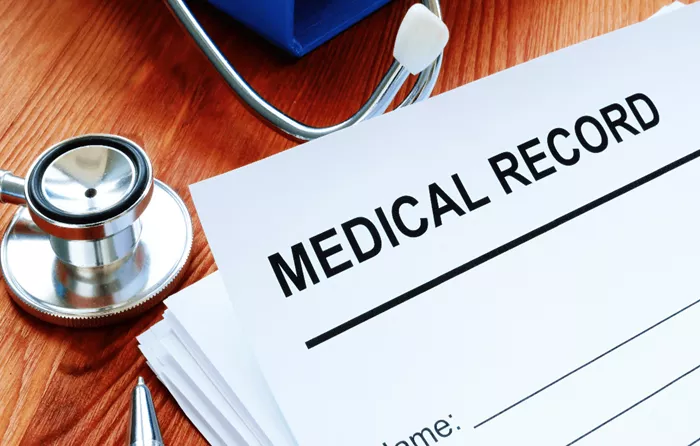A gallbladder attack creates intense pain and distress that often sends people rushing to emergency rooms. These sudden episodes occur when gallstones block bile flow or the gallbladder becomes severely inflamed. While some attacks pass without lasting harm, others signal dangerous complications requiring immediate medical intervention.
The Spectrum of Gallbladder Attack Severity
Mild attacks last under an hour. These shorter episodes cause discomfort but resolve as gallstones shift position and bile flow resumes. Many mistake them for indigestion.
Moderate attacks persist for hours. Intense pain lasting 2-6 hours typically indicates significant inflammation or persistent blockage needing medical evaluation.
Severe attacks continue for days. Unrelenting pain beyond 24 hours suggests possible complications like infection or tissue death in the gallbladder.
Biliary colic describes temporary blockages. This painful but non-dangerous form of attack occurs when stones temporarily obstruct then dislodge on their own.
Immediate Symptoms During an Attack
Excruciating upper right abdominal pain develops. The discomfort typically begins suddenly and builds to peak intensity within 15-60 minutes.
Pain radiates unmistakably. Most feel it spread to the right shoulder blade or between the shoulders as inflamed tissues irritate nearby nerves.
Nausea becomes overwhelming. The queasiness often prevents eating or drinking during the attack, sometimes leading to vomiting.
Restlessness is characteristic. Patients frequently pace, rock, or constantly shift positions seeking relief that doesn’t come.
Dangerous Complications That Escalate Risk
Cholecystitis means gallbladder inflammation. Infection sets in when blockages persist, causing fever and elevated white blood cell counts.
Gangrene indicates tissue death. Severe untreated inflammation can cut off blood supply, causing parts of the gallbladder wall to die.
Perforation risks abdominal infection. A ruptured gallbladder spills infected bile into the abdomen, creating a surgical emergency.
Pancreatitis develops when stones migrate. Gallstones blocking the pancreatic duct trigger dangerous pancreas inflammation.
Life-Threatening Systemic Effects
Sepsis can develop rapidly. Bacteria from an infected gallbladder entering the bloodstream causes whole-body inflammation.
Jaundice signals bile duct blockage. Yellowing skin and eyes mean stones have obstructed major ducts outside the gallbladder.
Shock becomes possible. Severe infections or fluid loss from vomiting can dangerously lower blood pressure.
Multi-organ failure risks increase. Prolonged infection and inflammation may damage kidneys, lungs, and other vital organs.
Diagnostic Evaluation of Attack Severity
Ultrasound detects stones and inflammation. This first-line test shows gallstones, thickened gallbladder walls, and fluid collections.
Blood tests reveal infection markers. Elevated white blood cells and liver enzymes indicate worsening conditions needing treatment.
CT scans assess complications. Detailed imaging helps identify abscesses, perforations, or stones in other ducts.
HIDA scans measure gallbladder function. This nuclear medicine test checks if the gallbladder is still working when inflammation subsides.
Treatment Approaches by Severity
Pain management is essential. Intravenous medications like morphine or ketorolac provide relief during acute attacks.
Antibiotics fight infection. Intravenous broad-spectrum antibiotics start immediately when infection is suspected.
Emergency surgery may be needed. Severe cases with gangrene or perforation require immediate gallbladder removal.
Elective surgery follows mild cases. After inflammation resolves, doctors schedule laparoscopic cholecystectomy to prevent recurrence.
Factors Increasing Attack Severity
Diabetes accelerates complications. Poor circulation and immune function allow infections to spread faster.
Older age raises risks. Elderly patients often develop more severe infections with less obvious symptoms.
Delayed treatment worsens outcomes. Waiting more than 72 hours with symptoms increases complication rates dramatically.
Large stones cause more obstruction. Stones over 1 cm are more likely to become trapped in ducts rather than passing through.
Recovery Expectations After Attacks
Uncomplicated attacks resolve in days. With proper treatment, pain and inflammation typically improve within 2-3 days.
Hospital stays vary by severity. Mild cases may go home same day, while severe infections require 5-7 day admissions.
Recovery before surgery takes weeks. The gallbladder needs 4-6 weeks to calm down before elective removal in inflamed cases.
Permanent damage is possible. Repeated severe attacks can scar bile ducts and liver tissue over time.
Prevention of Future Attacks
Dietary changes reduce recurrence. Low-fat eating decreases gallbladder stimulation that dislodges stones.
Weight loss should be gradual. Rapid weight reduction increases gallstone formation and attack risks.
Medications may help some patients. Ursodiol can dissolve small cholesterol stones over months of treatment.
Scheduled surgery prevents emergencies. Elective gallbladder removal after first attacks avoids future crises.
When to Seek Emergency Care
Fever over 101°F signals danger. This suggests infection requiring intravenous antibiotics and possible drainage.
Persistent vomiting prevents hydration. Inability to keep liquids down for over 12 hours risks dangerous fluid loss.
Yellow skin or eyes needs evaluation. Jaundice indicates possible bile duct blockage requiring specialized treatment.
Confusion or lethargy develops. These neurological signs may indicate sepsis spreading through the bloodstream.
Long-Term Risks of Untreated Attacks
Chronic gallbladder disease develops. Repeated inflammation leads to scarred, non-functioning gallbladders prone to cancer.
Liver damage accumulates. Persistent bile duct blockages can cause cirrhosis over years of untreated disease.
Bowel injuries become possible. Severe chronic inflammation may create abnormal connections between gallbladder and intestines.
Gallbladder cancer risk increases slightly. Long-term irritation from stones and inflammation elevates cancer chances.
Conclusion
Gallbladder attacks range from temporarily painful to immediately life-threatening depending on their duration and complications. While some pass without intervention, others represent medical emergencies requiring hospitalization and possibly emergency surgery. The presence of fever, persistent vomiting, jaundice, or unrelenting pain indicates particularly dangerous situations needing urgent care. Even mild attacks warrant medical evaluation since recurrence is likely without gallbladder removal. Modern treatments including laparoscopic surgery make recovery from severe attacks much more successful than in past decades. Understanding the warning signs of serious gallbladder disease empowers patients to seek timely care before complications develop. With appropriate treatment, most people recover fully from gallbladder attacks and prevent future episodes through surgical removal of the problematic organ.
Related topics:
Early Warning Signs Of Gallbladder Problems: Symptoms & Diagnostic Approachesearly
Understanding Gallbladder Attacks: A How-To Guide
When to Go to the Hospital for a Gallbladder Attack?


